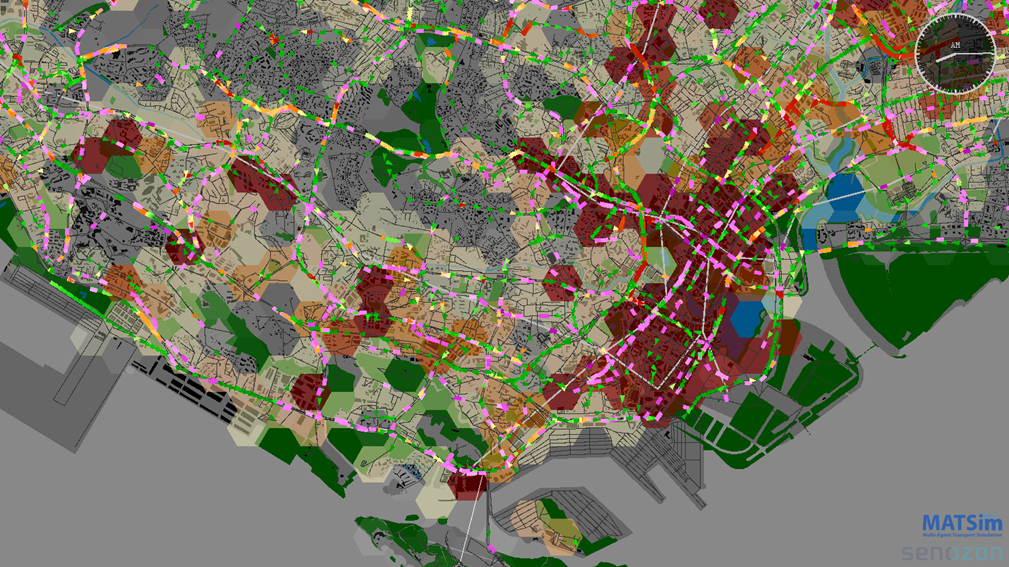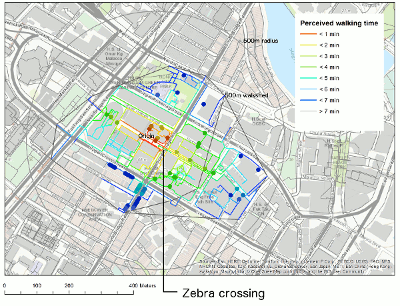
The flow of people and goods within and through city areas is a fundamental dimension of contemporary urban design, planning and management. Understanding, modelling and simulating such flows in a high-density city such as Singapore was at the core of our research.
To this end, we implemented and continue to improve a full-scale implementation of the agent-based transport simulation software MATSim for the case of Singapore. We not only enhanced the performance and functionality of this open-source simulation software, but also developed new approaches to improve the use of public transport smart card data to model the spatial dynamics of work activities.
To make MATSim more accessible for practitioners, we developed a new decision support system for transport planning. At the heart of the system is a spatial database that integrates the various data sources required for modelling and manages the input and output of the transport simulation. Various visualization tools connecting to that database help both researchers and planners to better analyse and communicate their findings and plans to different stakeholders.
The availability of public transport smart card data also opened a new strand of research. First, we applied such data to better understand the impact of different bus types and occupancy levels on the time it takes for people to get on and off vehicles. Next, we described the travel time between stops as a function of various attributes of the road network and the built environment. By integrating such models and travel demand derived from smart card data into the simulation tool MATSim, we can turn Big Data into Smart Data, which allows us to predict the impact of redesigning existing or new public transport lines with regard to service reliability and crowdedness.
In collaboration with the Urban Redevelopment Authority, we also engaged in a research project to study pedestrian behaviour and quantify the walkability of Singapore’s city centre. With meticulous effort we mapped various characteristics of the built environment that impact the walking quality, such as availability of activated frontages, width of the walkway or cover from sun and rain. The research clearly demonstrated that such urban design qualities not only impact pedestrian’s satisfaction but also their route choice behaviour. To make those findings applicable in planning practice, we also developed a GIS tool that allows the evaluation of the impact of new pedestrian infrastructure and planning policies.
If you are interested in learning more about these three research projects, please refer to the movies:
MATSim Singapore
Big Data MATSim
Embracing Walkability
Researchers for module VIII are Prof. Dr. Kay W. Axhausen, Dr. Alexander Erath, Artem Chakirov, Pieter J. Fourie, Sergio Ordonez, Lijun Sun, Teresa Tan, Michael van Eggermond, Atizaz Ali, and Basil Vitins.
